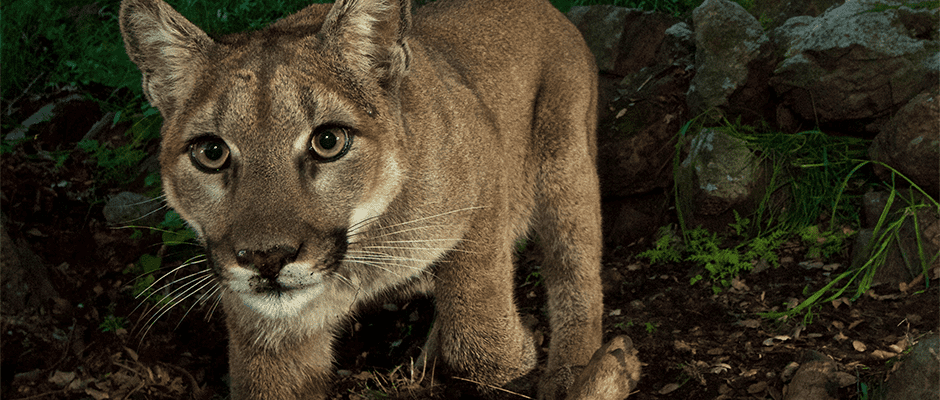Share this article
Predator control at the center of legal actions
In Dec. 2016, the Colorado Parks and Wildlife Commission (CPW) approved two predator management plans in the state – the Piceance Basin Predator Management Plan and Upper Arkansas River Predator Management Plan. Both plans seek to employ the U.S. Department of Agriculture’s Wildlife Services to assist in removing mountain lions, black bears, and other carnivores from the state in an effort to increase ungulate populations, including mule deer.
In Jan. 2017, WildEarth Guardians sued CPW, claiming that the predator management plans violated the Colorado Constitution’s prohibition against trapping, amongst other claims.This suit, which is still before the court, was then followed by a second lawsuit in Apr. 2017 by WildEarth Guardians and the Center for Biological Diversity in response to Wildlife Service’s ultimate decision to authorize the predator management work pursuant to the plans.
The groups claim that Wildlife Services violated the National Environmental Policy Act by failing to prepare an environmental impact statement (EIS) that adequately analyzes and considers the cumulative impacts of its decision to conduct predator damage management in Colorado. In 2016, Wildlife Services determined through an environmental assessment of predator damage management in Colorado that preparation of an EIS was not required under NEPA because the agency’s current actions have the “lowest overall negative environmental consequences” and that future actions will likely not result in cumulatively significant environmental impacts.
Piceance Basin Predator Management Plan
Mule Deer populations in the Piceance Basin, located in northwest Colorado, have been monitored since the late 1940s. Recent data as referenced in the Piceance Basin Predator Management Plan indicates a decline in early winter fawn recruitment for mule deer. The plan for this area proposes monitoring fawn survival in two areas — one implementing predator reduction and a second area with no predator reduction efforts — over a three year period. Predator reduction efforts will focus on black bears and mountain lions, removing an expected 10-20 and 5-10 individuals, respectively, during May and June in the specified birthing areas. Black bears and mountain lions are cited in the plan as being connected to predation of at least 25% of the monitored fawns since 2011.
Information gathered during the next three years will indicate if “predation is most limiting or if maternal or fetal condition predisposes fawns to lower survival and ultimately reduces their recruitment as adults.” CPW’s criteria to find predator reduction effective would be a 20 percent or greater decrease in fawn predation from black bears and mountain lions along with a subsequent increase in fawn survival of 15 percent or more.
The plan is currently set to take effect on May 1.
Upper Arkansas River Predator Management Plan
In 2014, CPW adopted the Colorado mule deer strategy which identifies predators as a potential limiting factor for mule deer populations. CPW began to develop a project to examine how mule deer populations might respond to mountain lion suppression. A deer data analysis unit (DAU), D-16, located in south Central Colorado was indicated as a potential site where mountain lion suppression could be beneficial for mule deer populations. Managers have found the leading known cause of doe and fawn mortality in D-16 to be mountain lion predation since the DAU was established in 1999.
The project began during the 2016/2017 winter and will be conducted in three stages. During the current stage, which lasts for three years, mountain lions will be suppressed in D-16 and effects will be compared to an adjacent DAU, D-34, where the mountain lion population will be able to “increase towards habitat potential” with approximately 10 percent harvest. In stage two, both mountain lion populations will increase towards habitat potential for three years. In the third stage, the D-34 population will be suppressed while the D-16 mountain lions will be allowed to increase. CPW does not estimate a higher level of take than what would typically be seen by hunting at this time if the project were not taking place. In addition to examining the effects on mule deer populations, the CPW hopes to gain a better understanding for future management efforts and harvest levels of mountain lion populations.
Both plans considered non-lethal alternatives for predator control, pointing to considerable cost and effort to move adults of each species and potential creation of additional challenges for landowners and wildlife managers in the release areas. Known family groups encountered during removal efforts in the Piceance Basin will be translocated.
Other Recent Predator Control Lawsuits Across the Nation
Legal action has also been taken in regards to use of chemicals to control predator and nuisance species. The two primary chemical compounds of concern are M-44 explosive cyanide devices and Compound 1080. M-44 is a spring-loaded device containing sodium cyanide and Compound 1080 is composed of sodium fluoroacetate, typically found in livestock protection collars.
A coalition of organizations — including Western Watersheds Project, WildEarth Guardians, and the Center for Biological Diversity — filed a petition on Mar. 28 requesting the Animal and Plant Health Inspection Service and Wildlife Services cease use of M-44 devices in Idaho and remove any and all M-44 devices currently deployed in the state.
On Apr. 4, the Center for Biological Diversity, WildEarth Guardians, The Humane Society of the United States, and The Fund for Animals filed a lawsuit against Secretary of the Interior Ryan Zinke, the U.S. Fish and Wildlife Service, and the USFWS Acting Director Jim Kurth for inaction to reinitiate consultation with the U.S. Environmental Protection Agency to protect species listed under the Endangered Species Act from sodium cyanide and Compound 1080.
Several attempts have been made to ban use of these chemicals through legislation since the 1970s. Most recently, Rep. Peter DeFazio (D-OR) has introduced H.R. 1817, the Chemical Poisons Reduction Act of 2017, which would prohibit the use of sodium fluoroacetate and sodium cyanide for predator control.
Read TWS’ Technical Review on Management of Large Mammalian Carnivores in North America.
Read TWS’ Standing Position on Toxic Chemical Compounds.
Header Image: ©National Park Service








